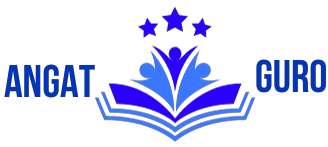In the ever-evolving landscape of education, the transition from traditional face-to-face learning to distance learning has become a necessity. To address this shift and cater to the needs of key stage 1 learners in grades 1-3, as well as those struggling with reading, “Panurundon sa Pagbasa” was created.
This video lesson offers a comprehensive approach to beginning reading and aims to develop reading skills with a focus on comprehension. The Need for “Panurundon sa Pagbasa”: The COVID-19 pandemic has reshaped the way education is delivered, forcing educators to adapt quickly to the challenges of remote learning. In this context, many young learners, especially those in their early years of schooling, have faced difficulties in acquiring essential reading skills. “Panurundon sa Pagbasa” emerged as a response to this need, recognizing that literacy is a foundational skill that impacts a child’s overall academic success.
Features and Objectives:
Targeted Audience: The video lesson is designed for key stage 1 learners, encompassing grades 1 to 3. It is tailored to suit their developmental needs and reading levels.
Struggling Readers: One of the primary objectives of “Panurundon sa Pagbasa” is to provide support for struggling readers. It includes specialized strategies and techniques to help these students overcome their reading challenges.
Beginning Reading: The video lesson begins with the basics of reading, introducing letter recognition, phonics, and vocabulary building. It employs engaging visuals and interactive activities to make learning enjoyable.
Reading Comprehension: Beyond decoding words, the video focuses on reading comprehension. It encourages critical thinking and understanding of the text through storytelling and questions that stimulate thinking.
Interactive Activities: “Panurundon sa Pagbasa” incorporates a range of interactive activities, such as quizzes, games, and storytelling sessions, to keep young learners engaged throughout the lesson.
Development Process: Creating “Panurundon sa Pagbasa” was a collaborative effort involving educators, curriculum specialists, and multimedia experts. The development process included the following steps:
Curriculum Alignment: Ensuring that the video aligns with the curriculum standards for grades 1 to 3 to provide a seamless transition between video lessons and classroom learning.
Content Creation: Designing and producing engaging content that integrates visuals, audio, and activities to cater to the learning preferences of young students.
User Testing: Conducting extensive user testing with students and teachers to gather feedback and make necessary improvements.
Accessibility: Ensuring that the video is accessible to all learners, including those with disabilities, by providing subtitles, alternative text for visuals, and compatibility with assistive technologies.”Panurundon sa Pagbasa” represents a vital step in the ongoing transformation of education. It not only addresses the immediate need for distance learning but also lays the foundation for strong reading skills in young learners. As the educational landscape continues to evolve, such innovative approaches will play a crucial role in shaping the future of learning.

